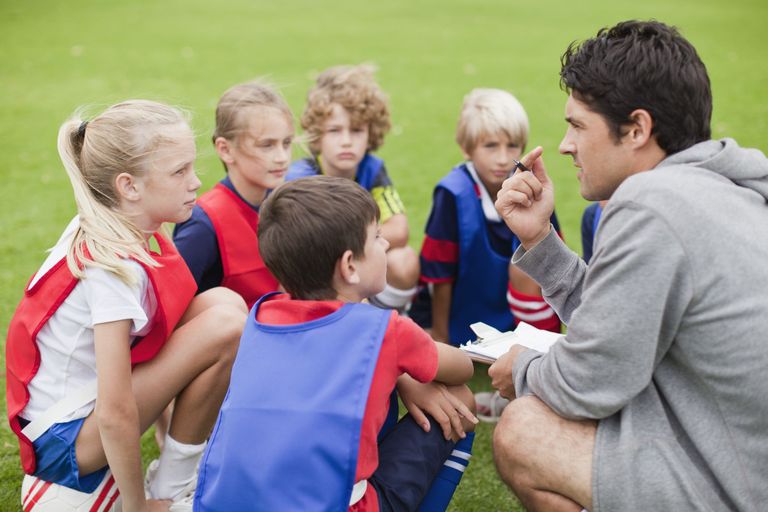With the rising incidence of obesity among young people in today’s computer and video game age fitness for kids has become a necessity. Prior to the influx of sedentary entertainment for young people fitness was just a natural part of kids lives. Kids went outside more to run around, play games, ride bikes, climb trees and any number of other things kids do, so specific fitness activities really weren’t necessary. Now, this is not as often the case as the incidence of childhood obesity and ill health among young people has gone up significantly. So what is the key to getting young people more active and reversing this trend?
First and foremost it is making fitness for young people fun. Very few kids are going to be interested in sitting on machines and pushing weights around or doing 3 sets of 10 reps on the bench press. They see no point in it, is there every really a point in it even for adults? Having fun and interacting with other kids is what they enjoy doing so fitness has to be made a part of those activities. It can’t be some separate tedious activity that they must do every day. Forget the treadmills, weight machines and other “fitness equipment” and let them learn to lift, use, and move their bodies in a natural environment and you’ll be off to a great start.
Kids still should be taught how to perform specific skills and activities, right?
Absolutely, this is of utmost importance to not only their health but also their bodies natural development. Kids are made to move around and do things, but learning to do them in the proper way will go a long way towards keeping them healthy throughout their life. But at the same time the fun aspect of it can’t be sacrificed or kids will learn to dislike activity as opposed to enjoying it. Starting at a young age teach them how to stop, start, run, slide, skip, jump and so forth. These basic movements will help them develop proper motor skills for sports and for daily life activities. Keep in mind that different kids will develop at different rates so lumping them all together based on their age is not the best strategy. Some will need more work than others depending on a whole host of factors. Suffice to say kids need to be looked at and treated as individuals when it comes to fitness and overall physical skill development.
What exactly should kids do for fitness?
Kids need structure, yet not too much structure. Controlled chaos is a better way to put it. Fitness for kids should start out by teaching them basic skills like how to walk, run, skip, jump, bound, throw, catch, push, pull, squat, bend, and lunge etc. correctly within a framework of fun. Teach the skill and then incorporate it into some sort of fun activity or game and then monitor them while they are doing the activity. It is very important to realize that some kids will do things slightly different than others and thus you should not be overly strict when it comes to correction. Let them make some errors, this way they will learn when corrected in a supportive way. At young ages kids are very vulnerable to being hurt by unbridled yelling and screaming directed at them by impatient coaches and parents who many times have unrealistic expectations of them. Let them have fun and feel included while at the same time teaching proper techniques that can be reinforced over time which will build their confidence and self esteem in those most vital years of their life.
Here is just a quick sample of what may be a fun activity for kids that will get them going and keep them active in an appropriate and safe way. This is directed towards kids in the 5-7 age range but could be used with older kids as well. Even though some of the skills may seem basic many older kids and even adults have never been taught how to perform them correctly. The workout will be based on three skills and followed by activities that will allow the practice of each one. The activities can be performed for as long as desired with optimum being in the range of 5-10 minutes total depending on the age of the kids. The younger they are the shorter the activity time as their attention span will be shorter and their endurance capacity lower.
Skills:
Walking– upright posture with head up and shoulders back, arms should swing freely and naturally in cadence with legs, feet should move in a heel, ball, toe fashion, remember heel toe rock and roll
Squating– starting from an upright position feet shoulder width apart or slightly wider, eyes should be looking straight ahead, knees bend then hips drop back and down while torso leans forward naturally from the waist to counter balance while back maintains its natural curves at least in first part of movement, squat all the way until thighs touch calves weight should remain on the heels throughout
Throwing– starting with a 2 hand throw from chest and then overhead and then one hand at a time right then left
Activities:
Walking Activity – in 30-60 sec intervals someone indicate various directions the kids must walk in using hand signals, forward, back, side to side, and at various angles
Squating Activity – in 30-60 sec intervals squat on que while moving in different directions, forward, back, side to side, and at various angles
Throwing Activity – in 30-60 sec intervals throw ball to partner alternating between 2 hand chest, 2 hand overhead, one arm right and left
These activities can also be integrated together for added stimulation after kids begin to get the hang of them individually. They may also be combined and made into a game with teams competing to see who can complete various combinations the fastest while still performing the skills correctly.




